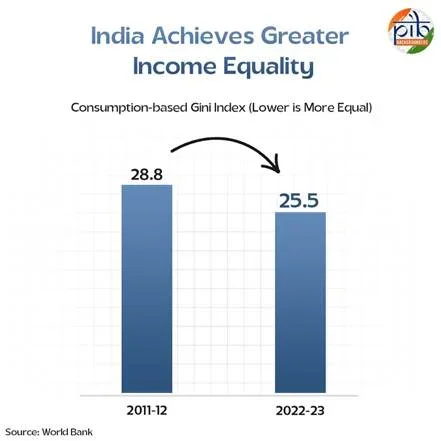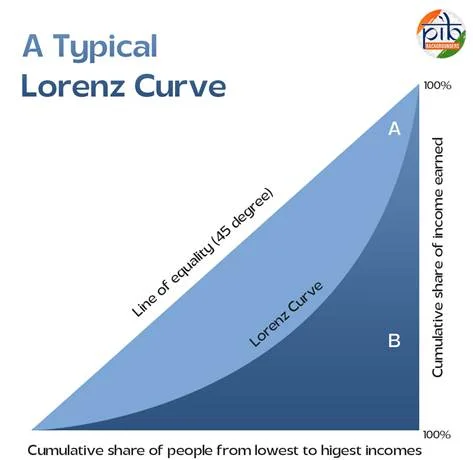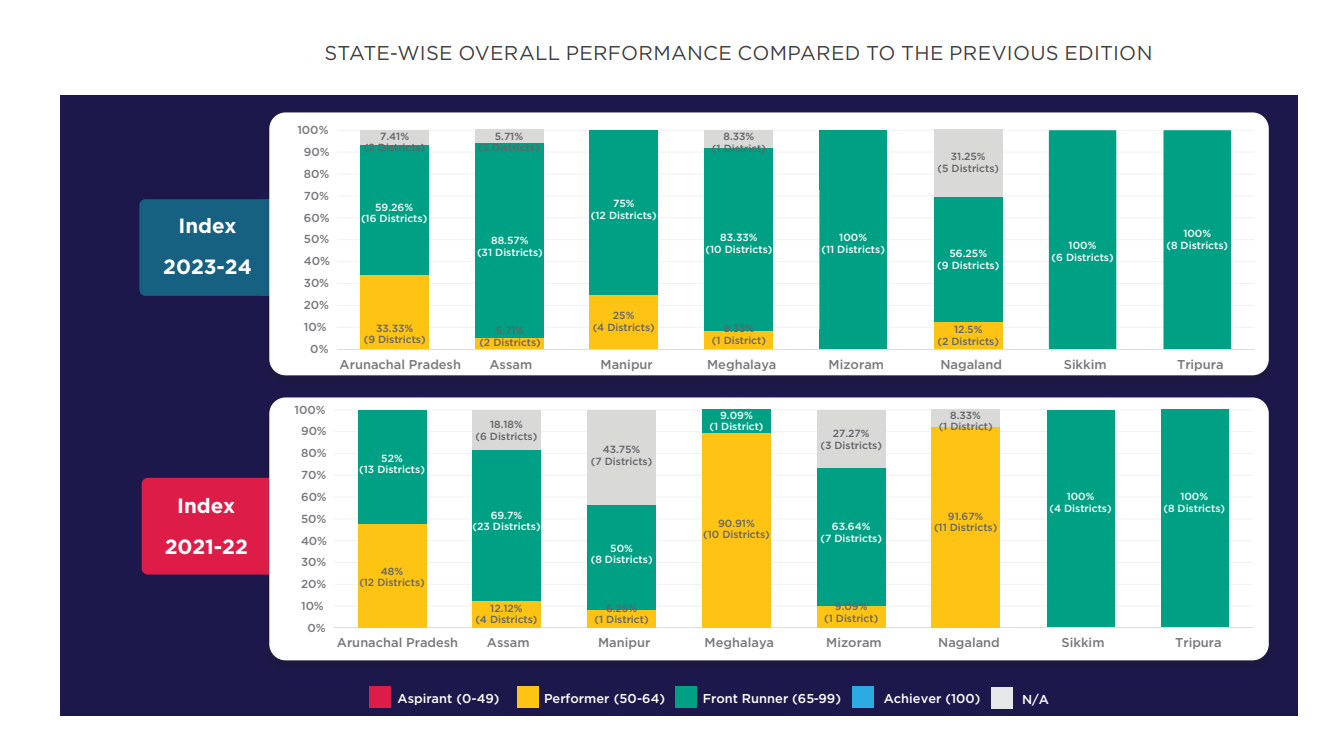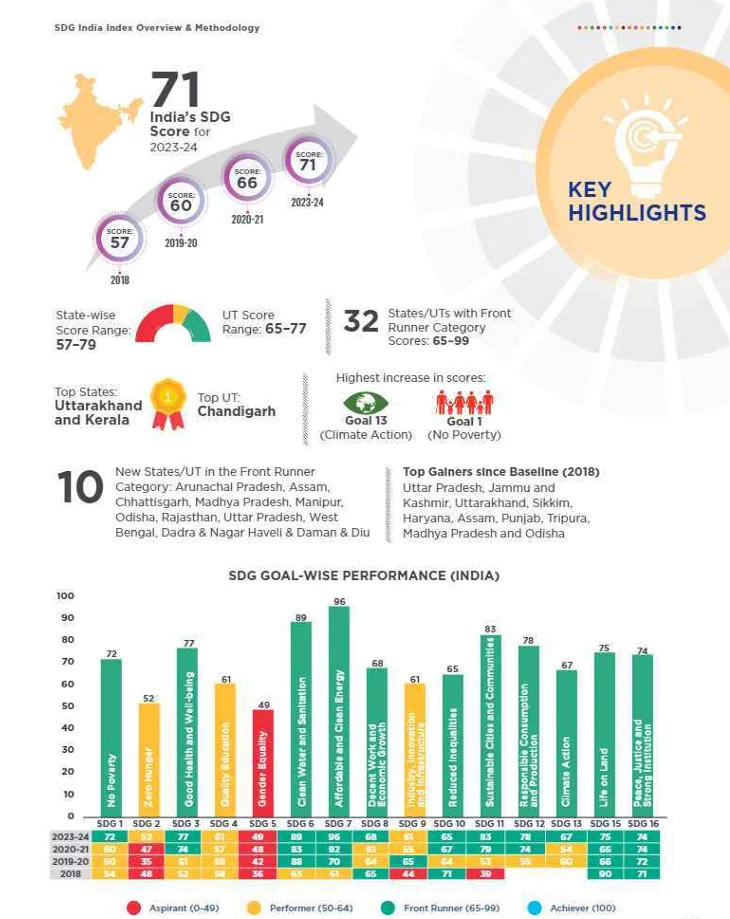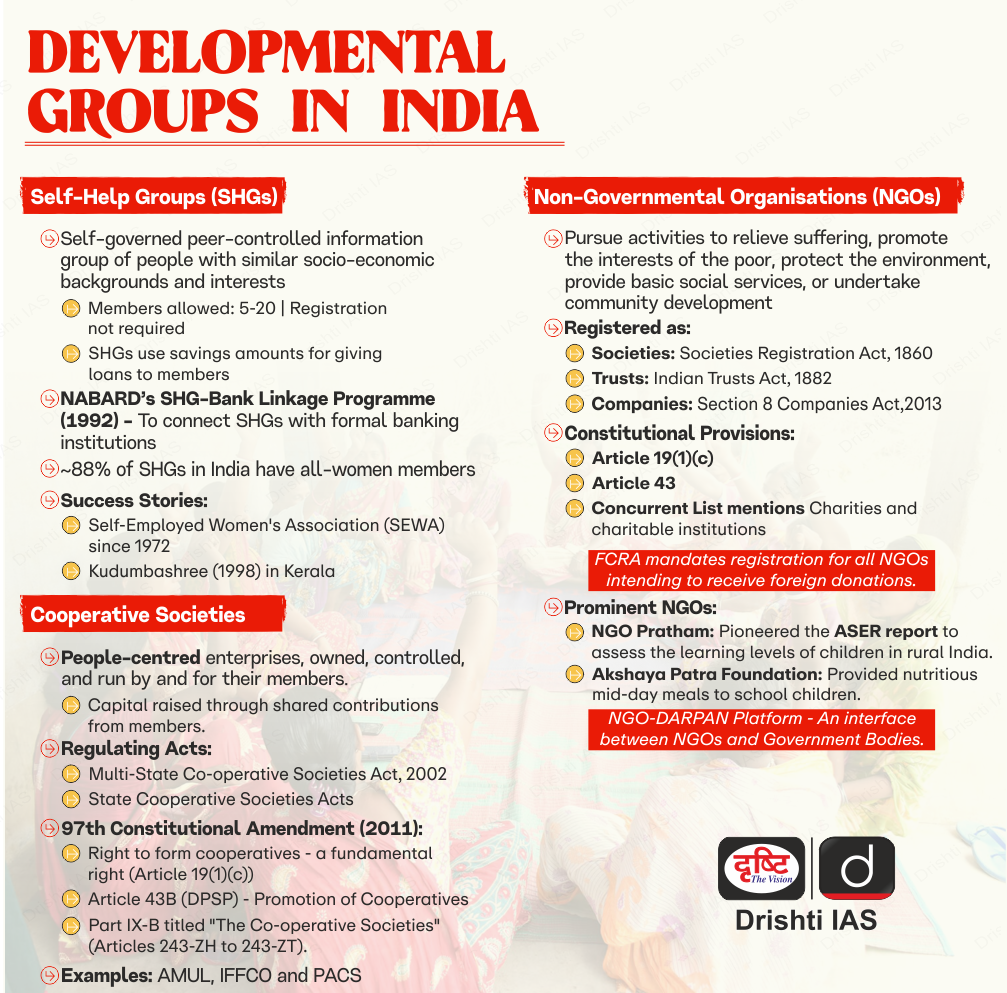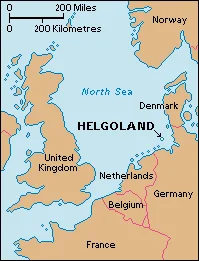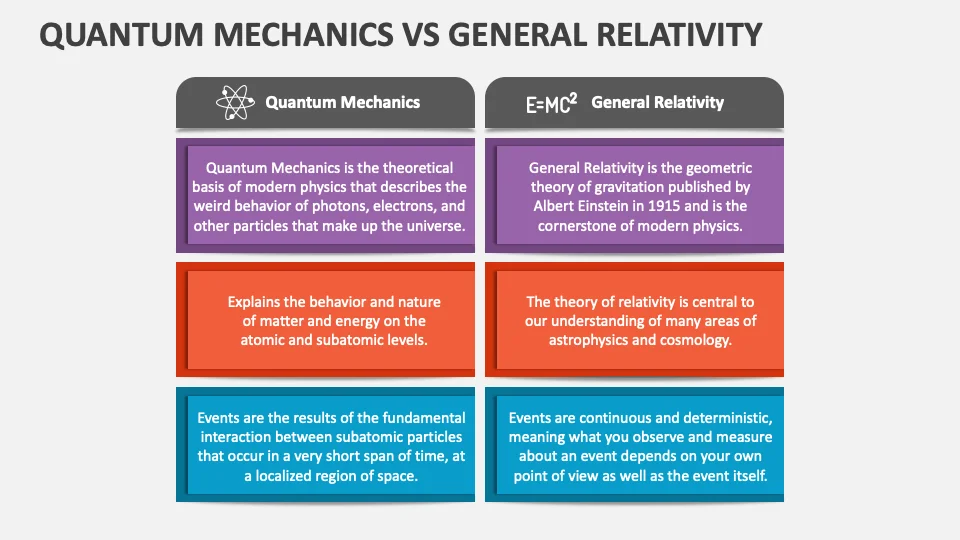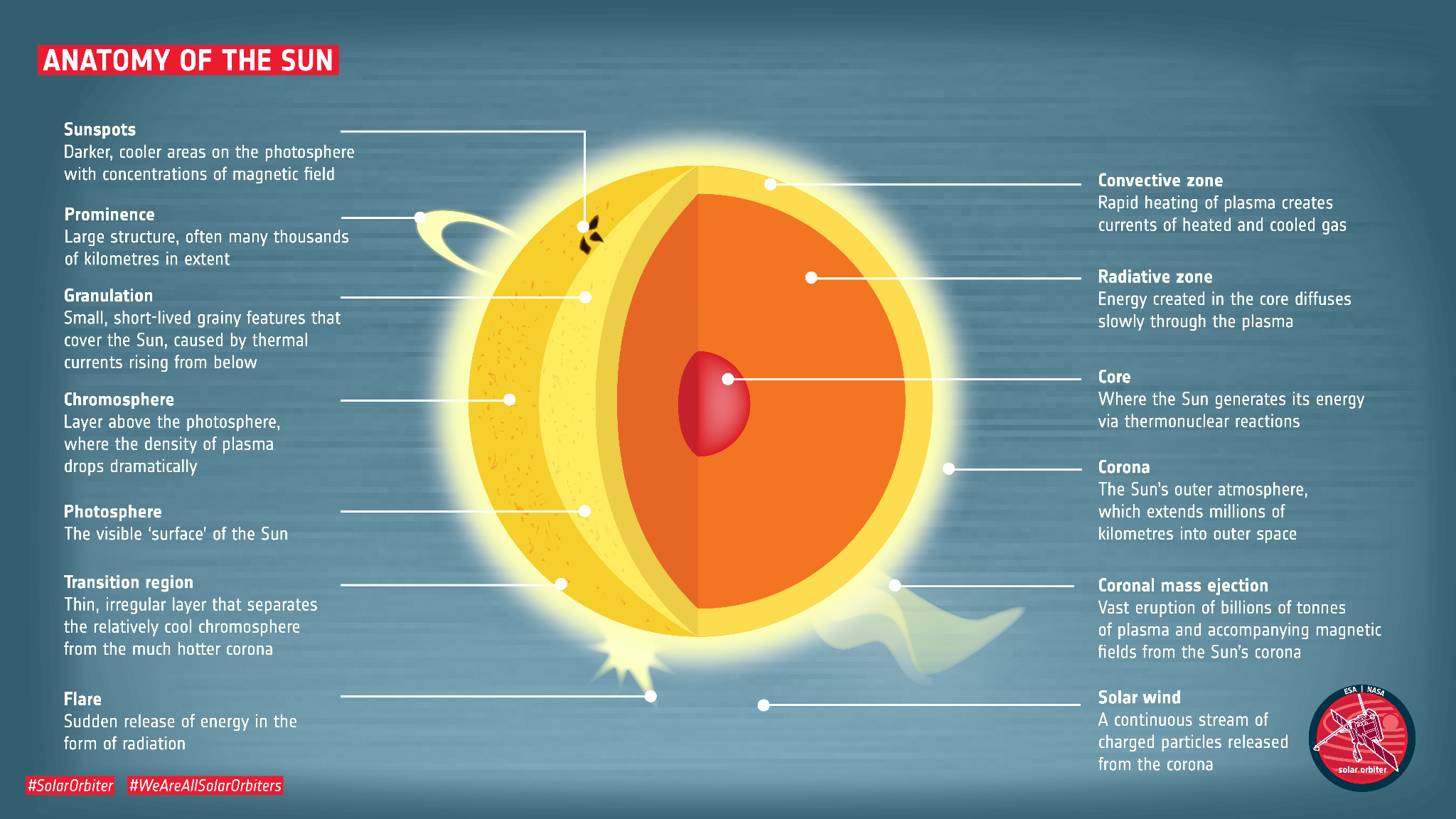International Relations
17th BRICS Summit
For Prelims: BRICS, IMF, World Bank, Emerging Markets and Developing Countries’ (EMDCs), WTO, Carbon Market, Two-state Solution, New Development Bank, UN Security Council, G7, G20, NAM, G77, Credit Rating Agency, SWIFT Systems, Free Trade Agreement (FTA).
For Mains: Role and relevance of BRICS in current global order, Associated challenges and way forward.
Why in News?
India’s Prime Minister took part in the 17th BRICS Summit held in Rio de Janeiro, Brazil, under the theme "Strengthening Global South Cooperation for More Inclusive and Sustainable Governance," and signed the Rio de Janeiro Declaration.
- Indonesia officially joined BRICS, while Belarus, Bolivia, Kazakhstan, Cuba, Nigeria, Malaysia, Thailand, Vietnam, Uganda, and Uzbekistan were welcomed as BRICS partner countries.
- India will assume the BRICS Chairship and host the 18th BRICS Summit in 2026.
What are the Key Outcomes of the 17th BRICS Summit?
- Global Governance Reform: BRICS backed expansion of the UN Security Council to include more permanent members from Asia, Africa, and Latin America for greater Global South representation, urged IMF and World Bank reforms to reflect Emerging Markets and Developing Countries’ (EMDCs) role, and supported a rules-based WTO.
- Sustainable Development: BRICS adopted the Leaders’ Framework Declaration on Climate Finance to mobilize resources for developing countries and endorsed an MoU on the BRICS Carbon Markets Partnership to enhance cooperation in carbon pricing and emissions trading.
- Peace and Security: BRICS reaffirmed “African Solutions to African Problems”, called for a Gaza ceasefire and two-state solution. BRICS leaders condemned the Pahalgam attack, and India stressed that terrorism must be rejected on principle, not treated as a matter of convenience.
- Financial Cooperation: BRICS advanced talks on a Cross-Border Payments Initiative to reduce US dollar reliance, supported the New Development Bank’s expansion, and the BRICS Multilateral Guarantees (BMG) pilot to de-risk investments.
- Technology and Digital Economy: BRICS adopted the Leaders’ Statement on Global AI Governance, concluded the Data Economy Governance Understanding and agreed to form a BRICS Space Council for collaborative space exploration.
- Health and Social Development: BRICS launched the Partnership for the Elimination of Socially Determined Diseases (Tuberculosis) to tackle health disparities.
- Condemnation of CBAM: BRICS nations have ‘condemned and rejected’ the Carbon Border Adjustment Mechanisms (CBAM) of the European Union (EU) and similar restrictive trade measures, saying they undermine their transition to a cleaner economy.
- CBAM is an EU’s tax on imported goods with more carbon emissions, meant to stop carbon leakage but making items like Indian steel and cement less competitive in the European market.
What is BRICS?
- About: The acronym ‘BRIC’ was coined by British economist Jim O'Neill in 2001 to represent the emerging economies of Brazil, Russia, India, and China.
- BRIC began functioning as a formal group during the G-8 Outreach Summit in 2006, held its first summit in Russia in 2009, and became BRICS with the inclusion of South Africa in 2010.
- Members: The initial five BRICS members were Brazil, Russia, India, China, and South Africa. In 2024, Iran, the United Arab Emirates (UAE), Egypt, and Ethiopia joined the group while Indonesia joined in 2025.
- Saudi Arabia has not yet formalised its BRICS membership, while Argentina, initially expected to join in 2024, later opted out.
- Significance: BRICS accounts for 45% of the world’s population and 37.3% of global GDP, surpassing the EU’s 14.5% and the G7’s 29.3%.
- Key Initiatives of BRICS: New Development Bank (2014), Contingent Reserve Arrangement (CRA), BRICS Grain Exchange, BRICS Rapid Information Security Channel, STI Framework Programme (2015) etc.
How is BRICS Redefining Power Dynamics in Global Governance?
- Energy Security: With Iran, Saudi Arabia, and the UAE joining, BRICS now accounts for around 44% of global crude oil production positioning it as a key player in ensuring energy security and influencing oil prices and supply chains.
- Neutral Space for Strategic Dialogue: In times of bilateral tensions, such as the India-China Doklam standoff, BRICS offers a neutral, non-Western diplomatic platform for dialogue encouraging constructive engagement.
- Instrument for Multilateral Reform: BRICS provides India and others a collective forum to push for reforms in global institutions like the UN Security Council, WTO, IMF, and World Bank to reflect current global realities.
- Inclusivity and Global Engagement: The inclusion of new countries, many of which are WTO members (except Ethiopia and Iran), shows the group's effort to expand its global footprint and engage a broader coalition of non-Western nations.
- Emerging Political and Economic Bloc: BRICS is increasingly seen as a counterbalance to the G7 and a rising force in the G20, addressing economic and political issues like inequality and underrepresentation amid declining Western influence.
What are the Key Challenges Hindering BRICS Functioning in the Current Global Order?
- Lack of Permanent Seat and Secretariat: BRICS does not have a permanent seat or a dedicated secretariat, which weakens its institutional framework. The absence of a permanent structure makes decision-making processes slower and less streamlined.
- Geopolitical Contradictions: BRICS operates on a consensus basis, but its expansion complicates decision-making due to contradictions like UAE and Egypt's US alliances and Iran's adversarial stance, risking potential ineffectiveness akin to the NAM and G77.
- Weakening BRICS Economies & Untapped Potential: China’s economic slowdown (growth dropped from 5.2% in 2023 to 4.6% in 2024, with projections falling to 3.4% by 2028), coupled with Russia’s decline amid war and sanctions, undermines BRICS’ capacity to drive global economic transformation.
- Additionally, despite accounting for more than 18% of global trade, intra-BRICS trade remains low at just 2.2% (2022). The proposed BRICS Credit Rating Agency (CrRA) failed to materialize due to lack of consensus, highlighting institutional inertia within the bloc.
- Limited Influence on Global Institutions: BRICS+ countries hold only 19% voting power in the IBRD, compared to 40% by the G7, limiting BRICS+ influence on global financial policy.
- The New Development Bank (NDB) lacks sufficient funds to match the World Bank, IMF, or AIIB.
- Slow Dedollarization: While Iran, Russia, and China trade in their own currencies, de dollarisation efforts remain inconsistent, and a common BRICS+ currency appears unlikely after recent expansion.
How Can BRICS Enhance Its Institutional Capacity and Leadership Role?
- Institutional Reforms: Establish a permanent BRICS secretariat, expand decision-making with weighted voting on economic matters while keeping consensus for political issues, and formalize new member integration with clear criteria like GDP, and economic stability to maintain strategic focus, and global credibility.
- Financial Integration: Promote alternative SWIFT systems, launch a BRICS+ Development Bank 2.0 to expand NDB lending, and establish a BRICS+ Free Trade Agreement (FTA) to reduce trade barriers among members.
- Geopolitical Cooperation: Adopt a unified stance on global governance e.g., UNSC reforms, WTO restructuring, strengthen BRICS+ security dialogue on counter-terrorism, and promote conflict resolution through a neutral platform.
- Innovation Partnerships: Form a BRICS+ Digital Alliance for joint R&D in AI, semiconductors, and green tech to reduce Western dependency, and enhance collaboration in space and nuclear energy by pooling resources.
- Soft Power & Cultural Exchange: Establish a BRICS+ University Network for student exchanges, and promote tourism through visa-free blocs to strengthen people-to-people ties.
Conclusion
BRICS, with institutional reforms, financial integration, and strategic unity, can emerge as a powerful bloc for Global South representation. By addressing internal contradictions and boosting intra-group cooperation, it can challenge Western-dominated systems while fostering inclusive growth. India’s 2026 chairmanship presents a crucial opportunity to shape this vision.
|
Drishti Mains Question: Critically examine the role of BRICS in promoting Global South cooperation and reforming global governance structures. |
UPSC Civil Services Examination, Previous Year Questions (PYQs)
Prelims
Q. Consider the following statements: (2016)
- New Development Bank has been set up by APEC.
- The headquarters of the New Development Bank is in Shanghai.
Which of the statements given above is/are correct?
(a) 1 only
(b) 2 only
(c) Both 1 and 2
(d) Neither 1 nor 2
Ans: (b)
Q. The ‘Fortaleza Declaration’, recently in the news, is related to the affairs of (2015)
(a) ASEAN
(b) BRICS
(c) OECD
(d) WTO
Ans: (b)

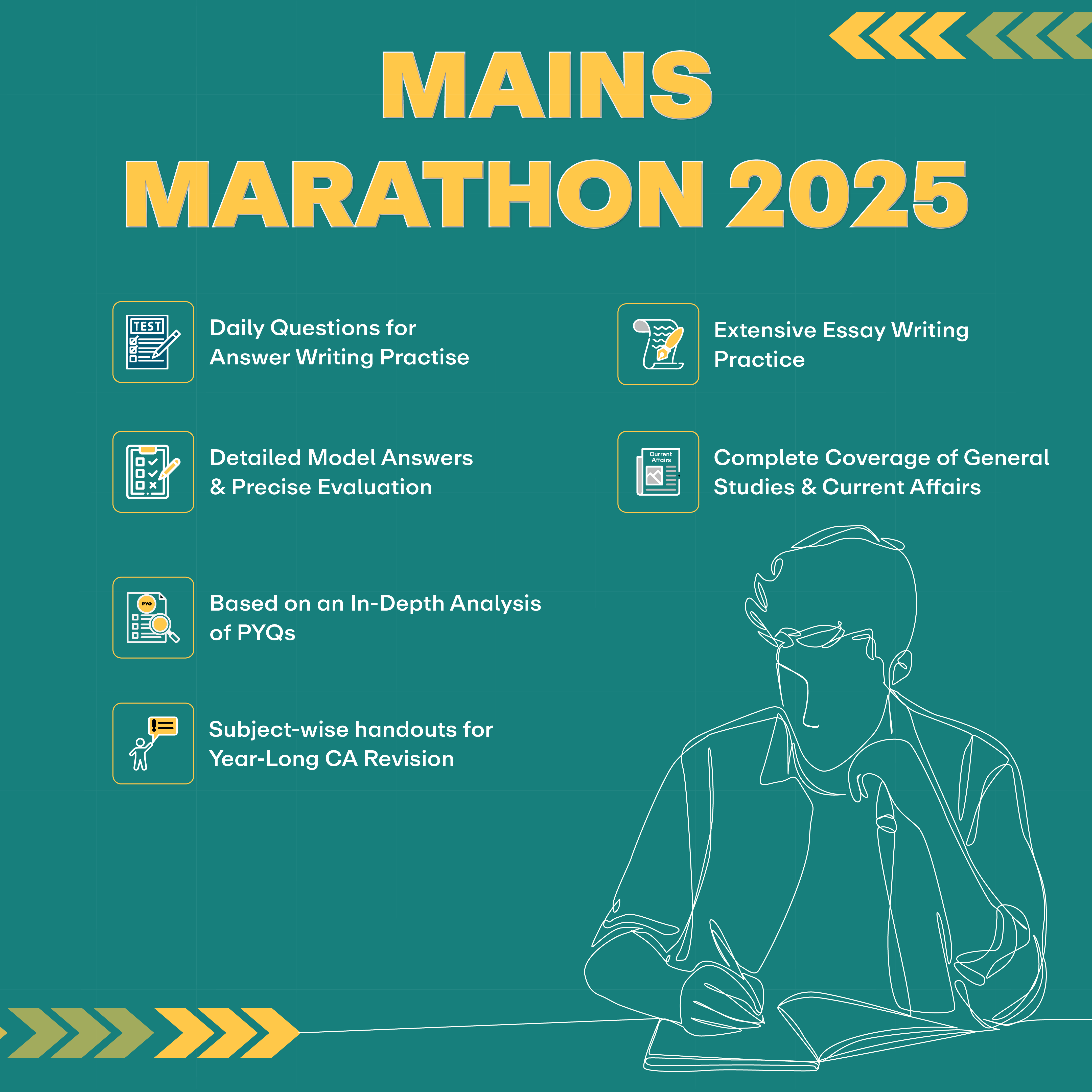
Social Justice
India Becomes 4th ‘Most Equal’ Country Globally
For Prelims: World Bank, Gini Index, Jan Dhan accounts, Ayushman Cards, BharatNet, Ayushman Bharat Digital Mission
For Mains: Income inequality and the Gini Index, Role of social welfare schemes in poverty reduction, Inclusive Growth
Why in News?
India is not only the world’s fourth-largest economy but is also ranked among the most equal societies today. According to the World Bank, India’s Gini Index stands at 25.5, making it the fourth most equal country globally.
What is the Gini Index?
- About: The Gini index, or Gini coefficient, was developed in 1912 by Italian statistician Corrado Gini. It measures income inequality within a population.
- The index is derived from the Lorenz curve, which plots the cumulative percentage of total income received against the cumulative percentage of recipients, starting with the poorest.
- The Gini coefficient quantifies the area between the Lorenz curve and the line of perfect equality (a 45-degree line), with values ranging from 0 (perfect equality) to 1 (maximum inequality), or 0 to 100 when expressed as a percentage (where 0 indicates perfect equality and 100 indicates maximum inequality). A lower Gini value reflects a more equitable society.
- India and Gini Index: India’s Gini Index was 28.8 in 2011, declining steadily to 25.5 in 2022, reflecting consistent progress in social equity.
- India’s score of 25.5 places it in the “moderately low inequality” category (Gini scores between 25 and 30).
- Notably, India ranks ahead of countries with higher inequality scores, including China (35.7), and the US (41.8).
- Significance for India: India now ranks more equal than all G7 and G20 countries.
- The low score challenges conventional assumptions of India as a highly unequal society, particularly when viewed through urban-rural and inter-state disparities.
- It indicates broad-based income growth, particularly among the lower income brackets.
What are the Key Drivers Behind India’s Equity Success?
- Poverty Reduction: As per the World Bank’s Spring 2025 Poverty and Equity Brief, 171 million Indians have been lifted out of extreme poverty since 2011.
- The World Bank has revised its global extreme poverty threshold from USD 2.15/day to USD 3/day (based on 2021 prices) to account for global inflation. This new benchmark reflects a more realistic cost of basic living.
- At the USD 3/day threshold, India's extreme poverty rate for 2022–23 stands at 5.3%, down from 27.1% in 2011–12.
- In absolute terms, the number of people in extreme poverty fell from 344.47 million to 75.24 million.
- Welfare Schemes for Equity:
- PM Jan Dhan Yojana: Financial inclusion has been at the heart of India’s social equity push.
- As of June 2025 over 55.69 crore people hold Jan Dhan accounts, giving them direct access to government benefits and formal banking services.
- Aadhaar and Digital Identity: As of July 2025, more than 142 crore Aadhaar cards have been issued. This system forms the backbone of welfare delivery by ensuring that benefits reach the right person at the right time through reliable authentication.
- Direct Benefit Transfer (DBT): The DBT system has streamlined welfare payments, reducing leakages and delays. Cumulative savings have reached Rs 3.48 lakh crore as of 2023, reflecting its efficiency and scale.
- Ayushman Bharat: Provides health coverage of up to ₹5 lakh per family per year. As of July 2025, over 41.34 crore Ayushman Cards have been issued.
- The Ayushman Bharat Digital Mission has further strengthened this effort, with over 79 crore health accounts created to link individuals to digital health services.
- Stand-Up India: As of July 2025, more than 2.75 lakh applications have been sanctioned, with total funding of Rs 62,807 crore. This initiative empowers individuals from disadvantaged communities to participate in economic growth on their own terms.
- Pradhan Mantri Garib Kalyan Anna Yojana (PMGKAY): As of 2024, the scheme has reached 80.67 crore beneficiaries, offering free food grains and ensuring that no one is left behind during times of crisis.
- PM Vishwakarma Yojana: Traditional artisans and craftspeople are vital to India’s economic and cultural fabric. The PM Vishwakarma Yojana supports them with collateral-free loans, toolkits, digital training, and marketing support.
- As of July 2025, 29.95 lakh individuals have registered under the scheme, helping preserve livelihoods and promote inclusive growth across rural and semi-urban areas.
- PM Jan Dhan Yojana: Financial inclusion has been at the heart of India’s social equity push.
What are the Challenges and Structural Concerns Undermining India’s Equity Achievements?
- High Poverty Despite Low Inequality Index: At the USD 3.65/day poverty threshold (suitable for lower-middle-income countries), India’s poverty rate was 28.1% in 2022.
- Over 300 million people still live in poverty, questioning the sustainability of equality claims.
- Wage and Income Disparity: Wage disparity remains significant, the top 10% earn 13 times more than the bottom 10% (2023–24).
- The Gini coefficient for income in 2023 is 0.410, higher than 0.371 in 1955, showing a long-term rise in income inequality.
- The richest 1% hold over 40% of total national wealth, while the bottom 50% own only 3%.
- These highlight deep income and wealth inequality, which consumption-based measures like the Gini Index of 25.5 may not fully reflect.
- Outdated Poverty Line: India still relies on the Rangarajan Committee’s 2014 poverty line (estimated as Monthly Per Capita Expenditure of Rs. 1407 in urban areas and Rs. 972 in rural areas), which may not reflect current cost-of-living realities.
- Without an updated benchmark, welfare schemes may not adequately target the truly poor.
- Unequal Access to Opportunities: Gaps persist in education, healthcare, digital access, and employment, especially for rural populations, women, SCs/STs, and informal workers.
- Equality in outcomes remains limited despite improvements in consumption.
- Equality in outcomes remains limited despite improvements in consumption.
Way Forward
- Revise National Poverty Line: The poverty line is outdated. It must be recalibrated to reflect the 2024–25 cost-of-living realities, inflation, and urbanisation trends.
- Strengthen Labour Market Protections: Ensure fair wages, social security, and labour rights enforcement, especially in the informal sector that employs over 80% of the workforce
- Boost Public Investment in Education and Health: Increase allocation to Sarva Shiksha Abhiyan, PM SHRI, National Health Mission, and nutrition schemes to address intergenerational poverty and inequality.
- Bridge the Digital Divide: Expand BharatNet, digital literacy, and access to affordable smartphones/internet to ensure digital equity, especially for rural youth and women.
- Gender Inequality: Provide economic and policy measures to value women’s unpaid labor. Improve women’s access to education, healthcare, land, and credit to reduce the gender gap in opportunities.
Conclusion
India’s Gini score of 25.5 reflects real progress in bridging inequality through balanced economic reform and social protection. Schemes like Jan Dhan, DBT, and Ayushman Bharat have improved access, while Stand-Up India and PM Vishwakarma Yojana promote self-reliance. India’s model shows that growth and equality can advance together with inclusive policies.
|
Drishti Mains Question: India is ranked among the most equal nations globally. Examine the key policy measures and welfare schemes that have contributed to this achievement. |
UPSC Civil Services Examination, Previous Year Question (PYQ)
Mains:
Q. COVID-19 pandemic accelerated class inequalities and poverty in India. Comment. (2020)

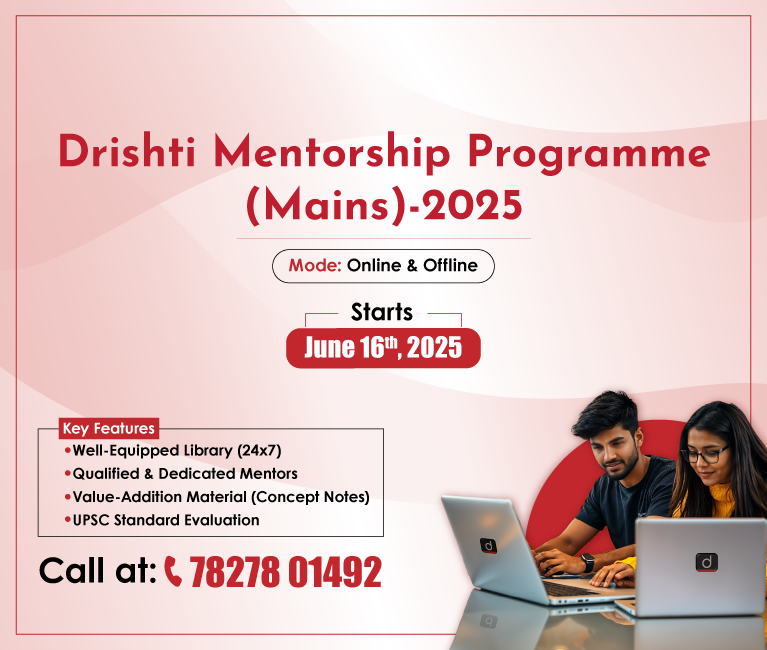
Important Facts For Prelims
2nd Edition of the NER District SDG Index
Why in News?
NITI Aayog (National Institution for Transforming India) has launched the 2nd edition of the North Eastern Region (NER) District Sustainable Development Goals (SDG) Index for 2023-24, building on the first edition launched in 2021.
What is the NER District SDG Index?
- About: The NER District SDG Index is a composite tool designed to monitor district-level progress on selected SDG indicators. Developed collaboratively by NITI Aayog, the Ministry of Development of North Eastern Region (MoDoNER), and with technical support from United Nations Development Programme (UNDP).
- The index covers all 121 out of 131 (92%) districts across the eight Northeastern states.
- Based on NITI Aayog’s national SDG Index methodology, the districts are ranked into four categories based on their composite scores: Achiever (Score = 100), Front Runner (Score 65–99), Performer (Score 50–64), and Aspirant (Score < 50).
- Key Findings of the NER District SDG Index 2023-24: In the 2023-24 edition, 85% of NER districts are in the Front Runner category (score 65–99), up from 62% in the previous edition, indicating significant improvement in overall district performance.
- All districts in Mizoram, Sikkim and Tripura have achieved Front Runner status, with no districts falling in the Aspirant or Achiever categories.
- Mizoram has the highest-scoring district in the entire NER (Hnahthial at 81.43) and Arunachal Pradesh has the lowest-scoring district in the entire region (Longding at 58.71).
- Sikkim has the narrowest range (5.5 points) in terms of the score of the highest and lowest district, showing the most consistent performance across its districts.
- Importance of NER District SDG Index: The NER District SDG Index facilitates evidence-based planning and resource allocation.
- The Index helps identify development gaps, guide targeted interventions, ensure efficient resource deployment, and support the localisation of SDGs through a cooperative federalism approach.
- It aligns national development programmes with local needs for more focused and effective outcomes.
- This initiative brings together states, NITI Aayog, and MoDoNER to foster sustainable and inclusive development in the region, aligning with India’s broader Viksit Bharat @2047 vision.
- The Index helps identify development gaps, guide targeted interventions, ensure efficient resource deployment, and support the localisation of SDGs through a cooperative federalism approach.
NITI Aayog’s National SDG Index
- About: It tracks states’ and UTs’ progress on 16 Sustainable Development Goals using 113 indicators aligned to the National Indicator Framework. The SDG Goal 14 (Life Below Water) has not been included in the calculation of the Composite Score for the Index as it solely pertains to the nine coastal States.
- States/UTs are categorised as Aspirants (0–49), Performers (50–64), Front-Runners (65–99), and Achievers (100), with scores reflecting progress toward India’s 2030 SDG targets and vision of Viksit Bharat @2047.
- SDG India Index for 2023-24: India’s SDG score rose to 71 (from 66 in 2020-21 and 57 in 2018), driven by gains in poverty reduction, economic growth, and climate action.
- Top Performers: Kerala and Uttarakhand topped with scores of 79.
- Lowest Performers: Bihar (57) and Jharkhand (62).
- Top Performing Goals: Goal 13 (Climate Action) score rose from 54 to 67, and Goal 1 (No Poverty) improved from 60 to 72.
- Goals 1, 8, and 13 are now in the Front Runner category (score between 65–99).
UPSC Civil Services Examination, Previous Year Questions (PYQs)
Prelims
Q. Sustainable development is described as the development that meets the needs of the present without compromising the ability of future generations to meet their own needs. In this perspective, inherently the concept of sustainable development is intertwined with which of the following concepts? (2010)
(a) Social justice and empowerment
(b) Inclusive Growth
(c) Globalization
(d) Carrying capacity
Ans: (d)
Mains
Q. Access to affordable, reliable, sustainable and modern energy is the sine qua non to achieve Sustainable Development Goals (SDGs).” Comment on the progress made in India in this regard. (2018)


Important Facts For Prelims
VRRR Auction to Absorb Excess Liquidity
Why in News?
The Reserve Bank of India (RBI) is set to conduct a 7-day Variable Rate Reverse Repo (VRRR) auction worth Rs 1 lakh crore to absorb surplus liquidity from the banking system.
What are Key Facts Regarding VRRR Auction and Liquidity?
- About VRRR: VRRR is a monetary policy tool used by the RBI to absorb excess liquidity through auctions, where banks bid at variable interest rates for placing short-term deposits with the RBI.
- In contrast, the Reverse Repo Rate is a fixed rate set by the RBI at which banks park excess funds without bidding, making VRRR more flexible and market-driven.
- Reason for VRRR Auction: RBI aims to bring the overnight rates on the Tri Party Repo Dealing System (TREPS) closer to the lower bound of the Liquidity Adjustment Facility (LAF) corridor, currently between 5.25% and 5.75%.
- TREPS is an electronic trading platform in India that facilitates collateralized short-term borrowing and lending between banks, mutual funds, NBFCs, and other financial institutions.
- It operates under the oversight of RBI and is managed by the Clearing Corporation of India (CCIL).
- Tri-Party Structure: Involves three parties i..e, the borrower, the lender, and a third-party agent (CCIL).
- LAF corridor is a monetary policy tool used by RBI to regulate short-term liquidity and stabilize interest rate fluctuations in the banking system.
- It comprises two main rates: the Repo Rate (upper bound)—the rate at which banks borrow from the RBI, and the Reverse Repo Rate (lower bound)—the rate at which banks deposit excess funds with the RBI.
- Repo/Reverse Repo uses RBI's fixed interest rate for overnight liquidity, while VRR/VRRR operates through competitive bank bidding in auctions for dynamic liquidity management.
- TREPS is an electronic trading platform in India that facilitates collateralized short-term borrowing and lending between banks, mutual funds, NBFCs, and other financial institutions.
- About Liquidity: Liquidity refers to the ease of accessing money or cash-equivalents for transactions, spending, or investment, indicating the availability of funds in the financial system.
- It is influenced by monetary policy, interest rates, repo/reverse repo operations, and government spending.
- Reasons for Liquidity Surplus: Liquidity injections through open market operations (such as G-sec purchases), term Variable Rate Repo (VRR) auctions, and dollar/rupee buy-sell swaps have collectively boosted liquidity in the economy.
Note:
- Variable Rate Repo (VRR): A VRR is a type of repo (repurchase agreement) transaction where the interest rate is determined through an auction process rather than being fixed in advance (Repo Rate is a fixed rate set by the MPC).
- It allows central banks (e.g., RBI) to inject or absorb liquidity from the banking system while letting market forces determine the cost of funds.
- Repo Rate: It is the rate at which commercial banks borrow from the central bank to meet short-term liquidity needs.
- Banks pledge securities as collateral and agree to repurchase them later at a higher price (including interest).
- Reverse Repo Rate: It is the rate at which the RBI borrows from commercial banks, offering government securities as collateral.
- It helps the RBI absorb excess liquidity and control inflation by encouraging banks to park surplus funds.
UPSC Civil Services Examination, Previous Year Questions (PYQs)
Q. If the RBI decides to adopt an expansionist monetary policy, which of the following would it not do? (2020)
- Cut and optimize the Statutory Liquidity Ratio
- Increase the Marginal Standing Facility Rate
- Cut the Bank Rate and Repo Rate
Select the correct answer using the code given below:
(a) 1 and 2 only
(b) 2 only
(c) 1 and 3 only
(d) 1, 2 and 3
Ans: (b)
Q. Which of the following statements is/are correct regarding the Monetary Policy Committee (MPC)? (2017)
- It decides the RBI’s benchmark interest rates.
- It is a 12-member body including the Governor of RBI and is reconstituted every year.
- It functions under the chairmanship of the Union Finance Minister.
Select the correct answer using the code given below:
(a) 1 only
(b) 1 and 2 only
(c) 3 only
(d) 2 and 3 only
Ans: (a)


Important Facts For Prelims
Legality of Phone Tapping
Why in News?
Recently, the Madras High Court and the Delhi High Court gave contrasting rulings on whether the government can legally tap phones to prevent crimes, especially in cases involving economic offences (bribery).
What are Key Legal Facts Related to Phone Tapping?
- About: It is the monitoring or recording of telephone conversations by a third party, typically without the knowledge or consent of the people involved.
- It is often done by government agencies for security, intelligence, or law enforcement purposes.
- Law Governing Phone Tapping:
- Indian Telegraph Act, 1885: Section 5(2) of the Act allows the central or state governments to intercept phone calls during public emergency or public safety concerns.
- Information Technology Act, 2000: It governs surveillance of digital communications (emails, WhatsApp, etc.).
- Indian Post Office Act, 1898: Applies to postal communications.
- Safeguards Against Phone Tapping: Rule 419A of Indian Telegraph Rules, 1951 provides procedures for phone tapping, including a Review Committee to check misuse.
- Surveillance must follow constitutional safeguards, particularly Article 19(1)(a) (freedom of speech and expression) and Article 21 (right to life and privacy, as upheld in the Puttaswamy judgment, 2017).
- Delhi High Court Ruling: In the Aakash Deep Chouhan v. CBI Case, 2020, the court affirmed that surveillance to prevent incitement to an offence is legally permissible and ruled that phone tapping was justified under the law.
- It held that corruption in public projects can endanger economic security, qualifying as a matter of public safety.
- Madras High Court Ruling: In the P. Kishore v. Secretary to Government Case, 2018, the court quashed the 2011 interception order issued by the Ministry of Home Affairs in connection with a suspected economic offence, stating there was no public emergency or clear threat to public safety.
- It also stated that the phone tapping was unlawful as it failed to meet the procedural standards laid down by the Supreme Court in People’s Union for Civil Liberties v. Union of India Case, 1997.
- Supreme Court Ruling 1997: As per the Supreme Court ruling in People’s Union for Civil Liberties vs Union of India Case 1997:
- Only the Home Secretary of the Centre or State can authorise phone tapping. Delegation of this power below the rank of Joint Secretary is not allowed.
- Every phone-tap order must be reviewed within two months by a review committee comprising:
- At the Centre: Cabinet Secretary, Law Secretary, Telecom Secretary.
- At the State: Chief Secretary, Law Secretary, and one other member (excluding the Home Secretary).
- Non Admissibility of Evidence: If a phone-tap order is unlawful, the information gathered is inadmissible in court, protecting privacy and free speech rights.
UPSC Civil Services Examination Previous Year Question (PYQ)
Q. ‘Right to Privacy’ is protected under which Article of the Constitution of India?
(a) Article 19
(b) Article 20
(c) Article 21
(d) Article 29
Ans: (c)
Q2. Right to Privacy is protected as an intrinsic part of Right to Life and Personal Liberty. Which of the following in the Constitution of India correctly and appropriately imply the above statement? (2018)
(a) Article 14 and the provisions under the 42nd Amendment to the Constitution.
(b) Article 17 and the Directive Principles of State Policy in Part IV.
(c) Article 21 and the freedoms guaranteed in Part III.
(d) Article 24 and the provisions under the 44th Amendment to the Constitution.
Ans: (c)


Rapid Fire
India’s First National Cooperative University
Union Home and Cooperation Minister inaugurated Tribhuvan Sahkari University in Anand, Gujarat, India’s first national cooperative university, aligning with the government’s vision of ‘Sahkar se Samriddhi’ (Prosperity through Cooperation) to strengthen the cooperative sector through education.
Tribhuvan Sahkari University (TSU)
- About: TSU is named after Tribhuvandas Kishibhai Patel, a key figure in India’s cooperative history and founder of Amul. His work, alongside Sardar Vallabhbhai Patel, helped transform the cooperative movement in Gujarat starting in 1946.
- The university will be registered under the Societies Registration Act, 1860.
- Objective: It aims to strengthen the cooperative sector by offering degree, diploma, and PhD courses in cooperative management, accounting, finance, marketing, cooperative law, and rural development to build a skilled workforce.
- It aims to train over 20 lakh professionals in 5 years, covering key areas like dairy, fisheries, and agricultural credit cooperatives.
- A dedicated Research and Development (R&D) Council will be established to drive innovation, ensure transparency, and promote best practices across rural cooperative institutions.
Cooperative Sector in India
- It includes member-owned organizations that work together to meet common social and economic needs through mutual help and fair sharing of resources, playing a key role in rural development and promoting financial inclusion.
- The right to form cooperative societies was made a Fundamental Right under Article 19(1)(c) by the 97th Constitutional Amendment Act, 2011.
- The sector is primarily governed by the Cooperative Societies Act, 1912 and the Multi-State Cooperative Societies (MSCS) Act, 2002.
- The MSCS (Amendment) Act, 2023 seeks to strengthen governance, accountability, and transparency in multi-state cooperatives.
| Read More: India’s Cooperative Sector |


Rapid Fire
India’s First Equine Disease-Free Compartment
India has set up its first Equine Disease-Free Compartment (EDFC) in Meerut Cantonment, Uttar Pradesh, which has been officially recognized by the World Organisation for Animal Health (WOAH).
- About EDFC: It is a scientifically managed and internationally recognized zone that guarantees horses are free from specific equine diseases, enabling them to engage in global trade and competitions.
- It has been established under the Ministry of Fisheries, Animal Husbandry and Dairying.
- Certification for Disease-Free Status: The EDFC is certified free from major equine diseases, including Equine Infectious Anemia, Equine Influenza, Equine Piroplasmosis, Glanders, and Surra.
- Part of India’s Disease-Free Compartment Strategy: The EDFC is a key element of India's broader strategy to create disease-free compartments, which also includes Highly Pathogenic Avian Influenza (HPAI)-Free Zones for safe poultry exports.
- India has maintained a disease-free status for African Horse Sickness since 2014, further strengthening its position in the global equine community.
- Equine diseases: These are diseases that impact horses, donkeys, mules, and other members of the equine family (Equidae). They can be infectious in nature, caused by viruses, bacteria, or parasites.
| Read More: State of the World’s Animal Health Report |
Rapid Fire
Operational License for Indigenous 700 MWe PHWRs
The Atomic Energy Regulatory Board (AERB) granted an operation licence for two indigenously developed (KAPS-3 and KAPS-4) 700 MWe (Megawatts electric) Pressurised Heavy Water Reactors (PHWRs) at the Kakrapar Atomic Power Station (KAPS) in Gujarat.
- AERB, after 15 years of rigorous multi-tiered safety reviews, granted a 5-year Licence for Operation to the Nuclear Power Corporation of India Limited (NPCIL).
- This marks a significant boost to NPCIL’s plan of building 10 more PHWRs of 700 MWe.
- NPCIL owns and operates all nuclear power plants in India, except PFBR variants (owned by The Indira Gandhi Centre for Atomic Research).
- India currently operates 15 PHWRs of 220 MWe, 2 PHWRs of 540 MWe, and a 700 MWe reactor at Rawatbhata, Rajasthan.
- PHWRs are a type of nuclear reactor that use heavy water (deuterium oxide, D₂O) as both a coolant and moderator, while natural or slightly enriched uranium serves as fuel.
- AERB is India's national regulatory authority responsible for ensuring the safe use of nuclear energy and radiation technologies in the country.
- Established in 1983 under the Atomic Energy Act,1962, AERB functions as an independent body under the Department of Atomic Energy (DAE).
- India’s nuclear power capacity is currently 8.18 GW (2024), with targets set at 22.48 GW by 2031–32 and 100 GW by 2047.
| Read More: India’s Nuclear Programme |


Rapid Fire
Helgoland
Helgoland (or Heligoland), a small 1.7 sq km red sandstone German archipelago, 50 km off Germany’s coast in the North Sea, is renowned as the birthplace of quantum mechanics.
- Helgoland, initially colonized by Frisians (ethnic group in Netherland & Germany), was controlled by Denmark, then Britain (1814), and finally Germany (1890).
- Post-WWII, it was used as a British bombing range before being returned to West Germany in 1952.
Foundation of Quantum Mechanics:
- In June 1925, physicist Werner Heisenberg, suffering from hay fever (allergic rhinitis), retreated to Helgoland island for relief.
- There, he developed matrix mechanics (how atoms absorb and emit light based on discrete energy levels), and laid the foundation of quantum mechanics (fundamental physics theory that explains the behavior of matter and energy at atomic and subatomic levels).
- He replaced the classical idea of electrons orbiting the nucleus with a system based on measurable quantities like light absorption.
- This led to key concepts such as the uncertainty principle and paved the way for modern technologies like lasers and semiconductors.
Werner Heisenberg:
- He was a German theoretical physicist and Nobel laureate (1932), known for formulating the Heisenberg Uncertainty Principle and laying the foundation of quantum mechanics at the age of 23.
- During World War II, Heisenberg played a central role in the German atomic program, which competed with the Manhattan Project.
| Read More: Quantum Nature of Gravity |


Rapid Fire
Miniature Coronal Loops
Astronomers from the Indian Institute of Astrophysics (IIA) have unveiled tiny, short-lived plasma loops in the Sun’s lower atmosphere that could hold the key to understanding how the Sun stores and releases magnetic energy.
- These miniature coronal loops, only 3,000–4,000 km long and <100 km wide, were previously undetectable due to their size and brief lifespan (lasting just a few minutes).
- They offer insights into magnetic reconnection (a process that releases sudden bursts of energy in the solar atmosphere), and are linked to plasma jets erupting from their tips, mirroring larger solar coronal events (like solar flares and coronal mass ejections ).
- Differential Emission Measure (indicates the amount of emission from plasmas at a specific temperature) analysis showed that the plasma temperatures in miniature coronal loops reach several million degrees, which is unusually high for the chromosphere, where plasma densities are significantly higher than in the corona.
- This challenges existing solar heating models, which struggle to explain such extreme temperatures in the Sun’s lower atmospheric layers.
- Future telescopes like India’s National Large Solar Telescope (NLST) in Ladakh may help explore these features further.
- NLST is a proposed ground based optical and near infra-red (IR) observational facility in the country. It is designed to address an array of key scientific issues related to origin and dynamics of solar magnetic fields.
| Read more: Coronal Mass Ejections |



